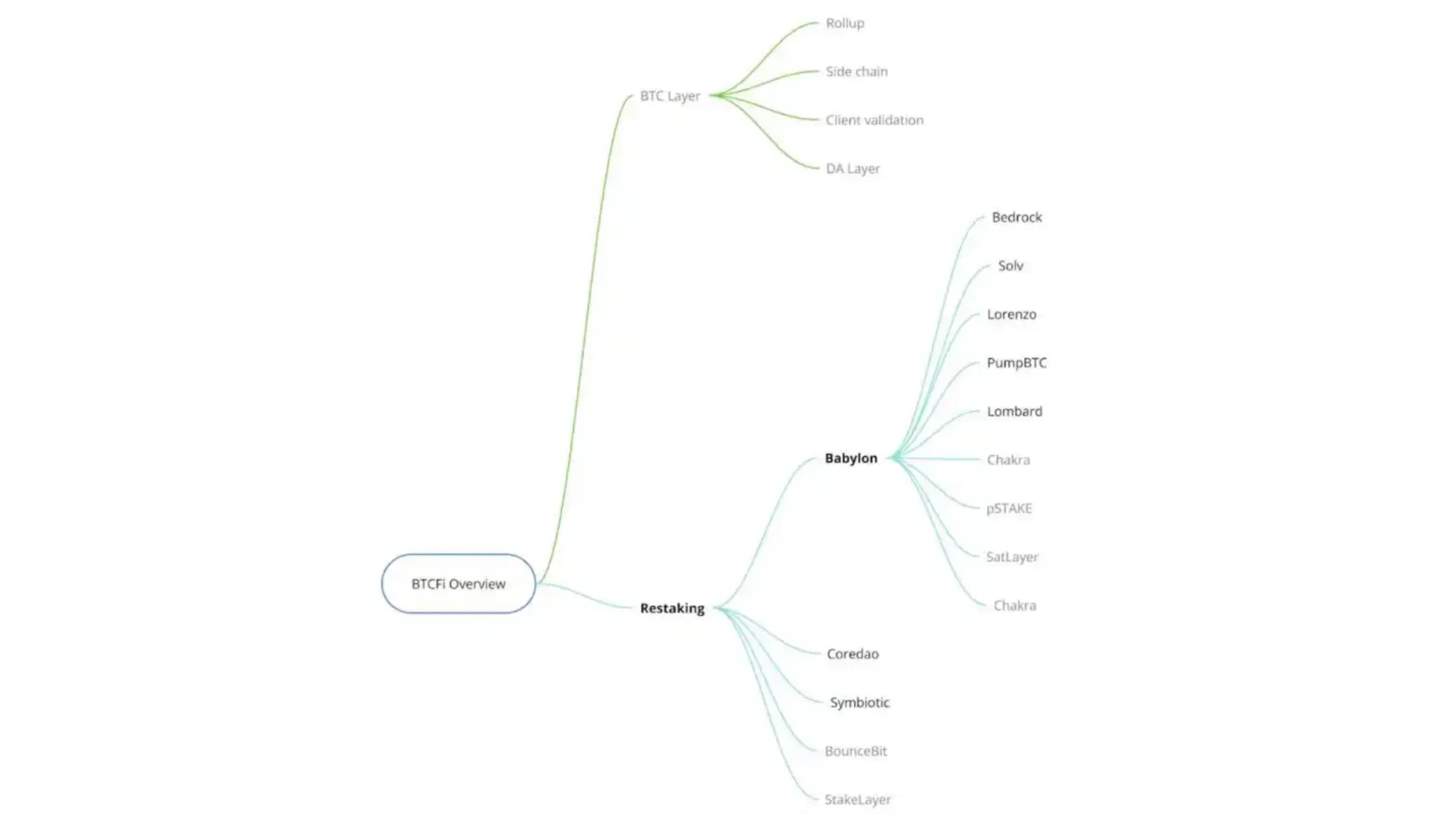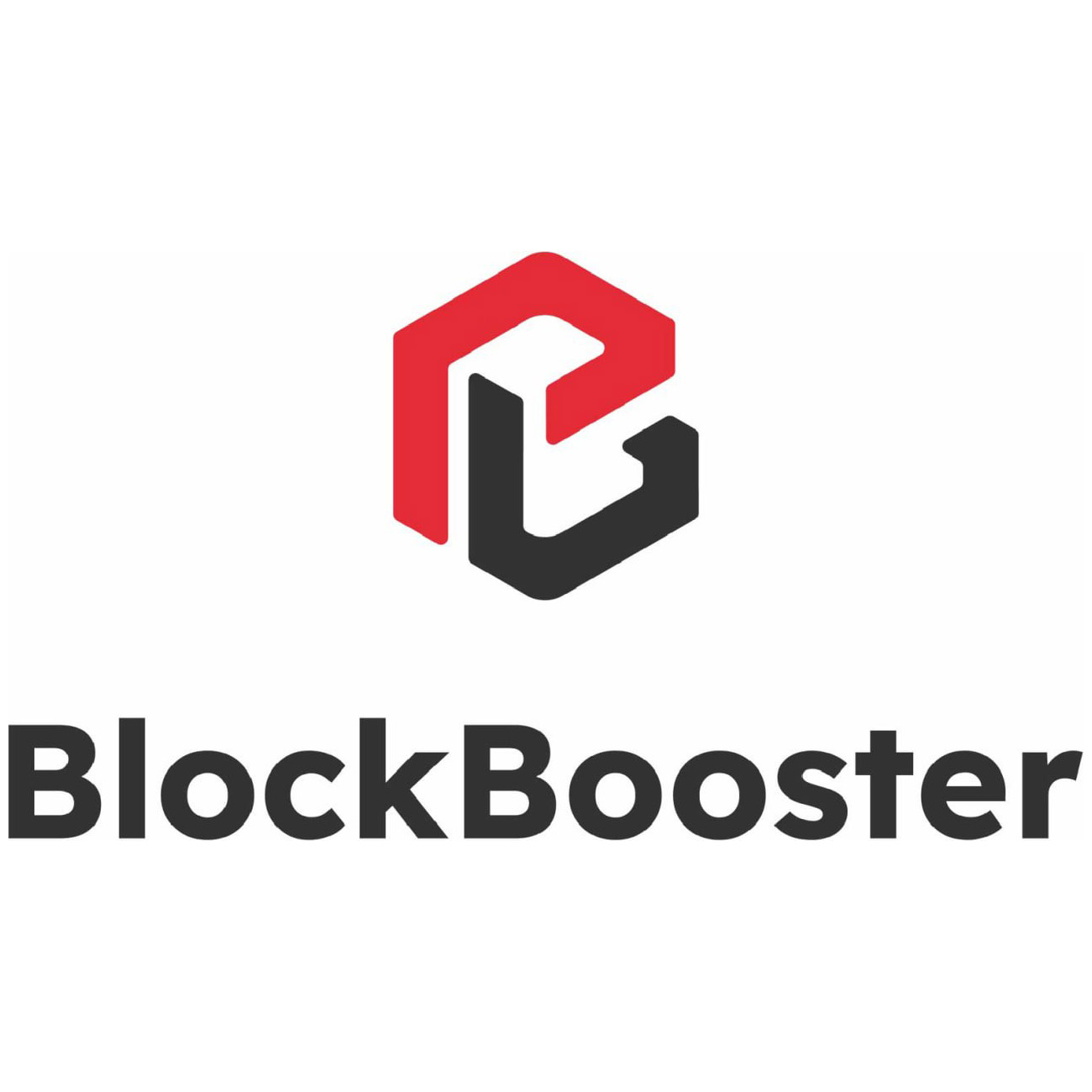Original author: Kevin, Caiya researcher from BlockBooster

Bitcoins potential for yield has been limited by its Proof of Work (PoW) consensus. Unlike Proof of Stake (PoS), Bitcoin lacks a native staking mechanism. However, with the rise of BTCFi, new ways are gradually emerging that allow Bitcoin to generate yield without sacrificing security. The BTCFi ecosystem is roughly divided into two parts: BTC layer with heavy staking, and asset protocols such as ARC 20 and BRC 20. This article will explore how emerging players in the BTCFi space are reshaping the Bitcoin heavy staking landscape and compare their main advantages.
The current Bitcoin heavy staking landscape
Bitcoin re-staking is not a new topic in this cycle. There are already well-known projects such as BounceBit, Coredao, Stakelayer, as well as Babylon and Symbiotic, which have received widespread attention recently.
First, let’s analyze Babylon’s solution. Babylon’s Bitcoin staking solution includes several innovations designed to enhance security and user experience, making it stand out from many protocols:
Remote staking: Babylon uses Bitcoins UTXO model and script system for staking, slashing, and reward distribution. A significant advantage is that users who stake Bitcoin will not face the risk of slashing penalties, only node operators will be affected. This means that users Bitcoins are not at risk of loss, but they cannot unlock the staked funds in advance, which is more secure.
Timestamp Server: Babylons timestamp server records events from the PoS chain to the Bitcoin mainnet, providing tamper-proof timestamp records. Although the Bitcoin mainnet ensures that these records cannot be changed once they are on the chain, the accuracy of the timestamp still depends on Babylons PoS network.
Three-layer architecture: Babylons architecture is divided into three layers - Bitcoin as the base layer, Babylon as the middle layer, and the PoS chain as the top layer. Babylon records the checkpoints of the PoS chain on the Bitcoin blockchain to ensure the immutability of the data. By using Cosmos as the middle layer, it enhances its scalability and flexibility, attracts node operators, and enables native Bitcoin staking to support Babylons PoS network.
While Babylon is leading the way in native Bitcoin staking, it is not the only protocol exploring re-staking. Let’s take a look at two other star projects’ Bitcoin staking solutions:
Symbiotic: Co-founded by Lido and Paradigm, Symbiotic is considered a direct competitor to EigenLayer. Symbiotic recently announced support for Bitcoin re-staking, but currently only accepts WBTC staking. Unlike the native Bitcoin staking offered by Babylon, Symbiotic requires users to transfer Bitcoin to a third-party escrow address. So far, Symbiotic has staked 1,630 WBTC and incentivizes user participation through point rewards.
CoreDAO: CoreDAO provides two staking methods: one is native staking, which allows Bitcoin holders to delegate Bitcoin to Core validators without transferring funds; the other is custodial staking, where users send Bitcoin to a lock-up address and mint coreBTC on the CORE chain. Currently, CoreDAO only supports the custodial staking option.
All three hope to bring more application scenarios to the Bitcoin ecosystem and stimulate cross-chain communication or data sharing between Bitcoin and other chains. The re-staking platform itself shares the security of the underlying network through modularization, and empowers AVS upwards, providing infrastructure for a wide range of applications, greatly improving the efficiency and performance of the blockchain.
advantage:
Babylon and CoreDAO shorten the staking process of the Pos chain through Bitcoin’s timestamp mechanism;
Symbiotic has the support of Lido and Paradigm, and has an advantage in protocol cooperation and ecological promotion;
Babylon is the first to implement native staking, achieving trustlessness in Bitcoin staking.
Disadvantages:
CoreDAO and Symbiotic still rely on third-party custodians to address trust assumptions;
Babylons PoW+PoS architecture has deficiencies in security logic. It can only passively rely on the Bitcoin network to achieve the accounting function, and cannot actively utilize the security of the Bitcoin network.
Unlike the Ethereum re-staking platform, the Bitcoin re-staking platform does not directly transmit the security of the Bitcoin network to its respective PoS network, which is also the key direction of future development.
Bitcoin Heavy Staking Ecosystem
There are already multiple protocols working with the Bitcoin restaking ecosystem, with projects aiming to increase the liquidity and utility of staked Bitcoin assets:
Bedrock: As the first round of pre-staking lead project of Babylon, holding about 30% of the shares, Bedrock supports staking WBTC to mint uniBTC. After the Babylon mainnet is launched, users will be able to receive rewards from uniBTC and Babylon staking, and may receive airdrops through Bedrocks Diamonds program.
Lombard: Lombard allows users to stake Bitcoin through Babylon, and Lombard is responsible for managing the re-staking process. When users stake Bitcoin, Lombard mints an equal amount of LBTC on Ethereum. Users can use LBTC to participate in DeFi activities and enjoy the flexibility of cross-chain benefits.
Lorenzo: Lorenzo provides liquid staking and re-staking through a principal-return split model, allowing users to stake Bitcoin or BTCB to obtain stBTC (liquidity principal token) and YAT (return token). This dual-token system enables users to accumulate Lorenzo points while earning Babylons native staking rewards.
Pell Network: Pell is the first secure network built on Bitcoin re-staking and runs on Babylons AVS network. Pells TVL has exceeded $200 million in three weeks, with more than 410,000 unique addresses. Pell offers four re-staking methods, ranging from native Bitcoin staking to staking LP tokens containing liquid BTC derivatives. Its AVS architecture enables it to capture a large amount of revenue from middleware, oracles, modular chains, and other fields.
PumpBTC: Allows users to stake WBTC or BTCB and receive pumpBTC tokens at a 1:1 ratio. PumpBTC is unique in that the re-staking process is handled by third-party custodians such as Cobo and Coincover. Users can enjoy the benefits without directly interacting with the protocol, simplifying the staking process.
Solv Protocol: Solv has developed a cross-chain Bitcoin asset liquidity layer that supports cross-chain bridging of WBTC on Arbitrum, BTCB on BNB chain, and BTC.b on Avalanche. Users can earn XP points by holding solvBTC, participating in lending agreements, or adding liquidity to liquidity pools. In addition, although the Babylon mainnet has not yet been launched, users can still bridge to Babylon through Solvs vault to earn more points.
Stakestone: It is expected to adopt a model similar to ETH-STONE, where users stake native Bitcoin to Babylon and mint yield-based STONEBTC for cross-chain liquidity. Users can earn points from various ecosystems, such as 2x Scroll points.
in conclusion
It is of great significance to transform Bitcoin into an asset that can generate income. Bitcoin re-staking is an effective supplement to the definition of Bitcoin as digital gold, which greatly improves its liquidity. Unlike the Ethereum ecosystem, BTCFi protocols such as Babylon, Symbiotic and Coredao do not rely on pre-existing infrastructure, which brings both challenges and opportunities. Platforms such as Solv, Lombard and Lorenzo are gradually developing, focusing on multiple rewards, security flexibility and dual incentive systems respectively. BTCFi is still in its early stages, and the technology and ecosystem are developing rapidly. We will continue to pay attention to the developments in this field.
About BlockBooster: BlockBooster is an Asian Web3 venture studio backed by OKX Ventures and other top institutions, committed to becoming a trusted partner for outstanding entrepreneurs. Through strategic investment and in-depth incubation, we connect Web3 projects with the real world and help high-quality entrepreneurial projects grow.
Disclaimer: This article/blog is for informational purposes only and represents the personal opinions of the author and does not necessarily represent the views of BlockBooster. This article is not intended to provide: (i) investment advice or investment recommendations; (ii) an offer or solicitation to buy, sell or hold digital assets; or (iii) financial, accounting, legal or tax advice. Holding digital assets, including stablecoins and NFTs, carries a high degree of risk and may fluctuate in price or become worthless. You should carefully consider whether trading or holding digital assets is appropriate for you based on your financial situation. If you have questions about your specific situation, please consult your legal, tax or investment advisor. The information provided in this article (including market data and statistics, if any) is for general informational purposes only. Reasonable care has been taken in preparing these data and charts, but no responsibility is assumed for any factual errors or omissions expressed therein.










